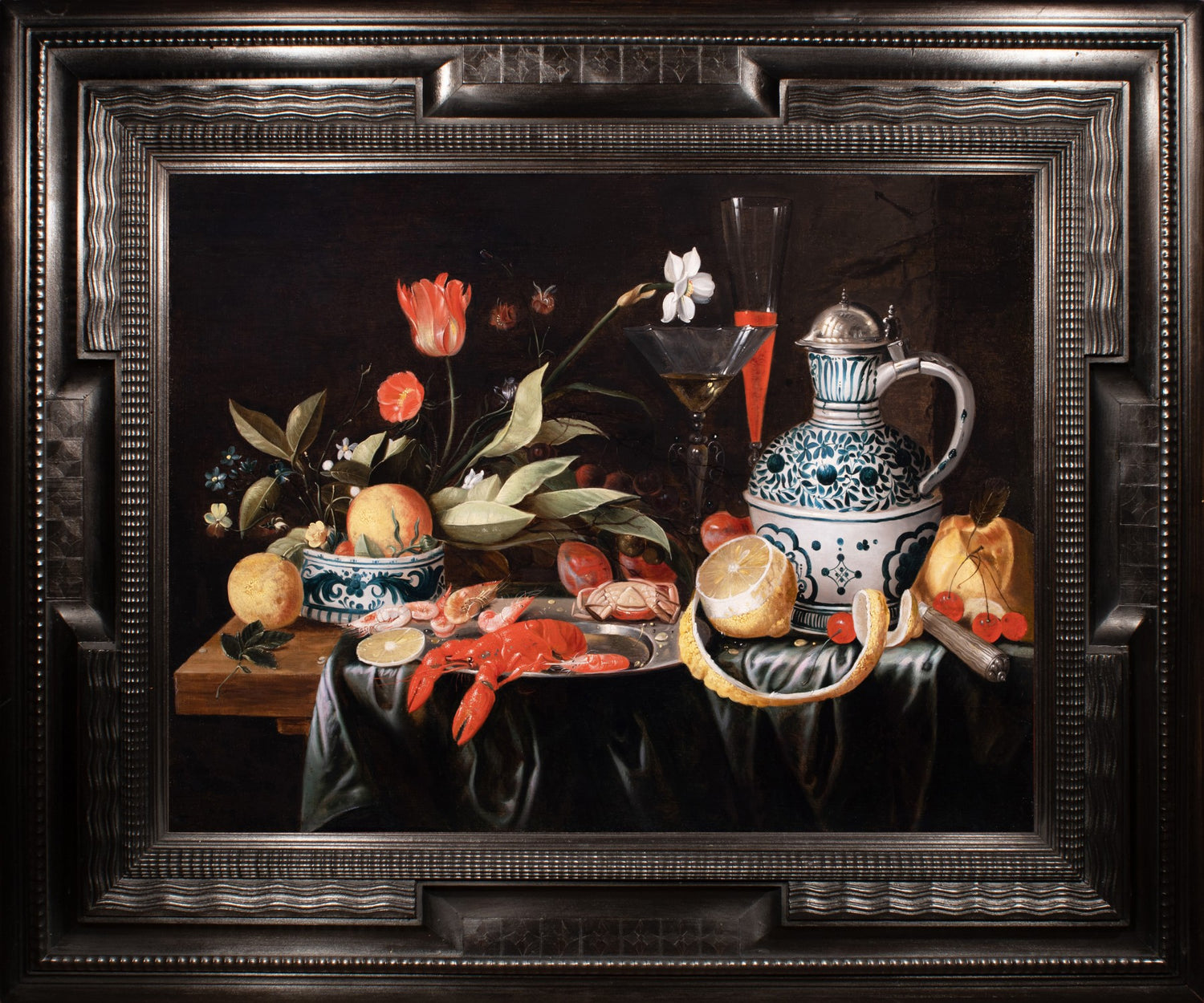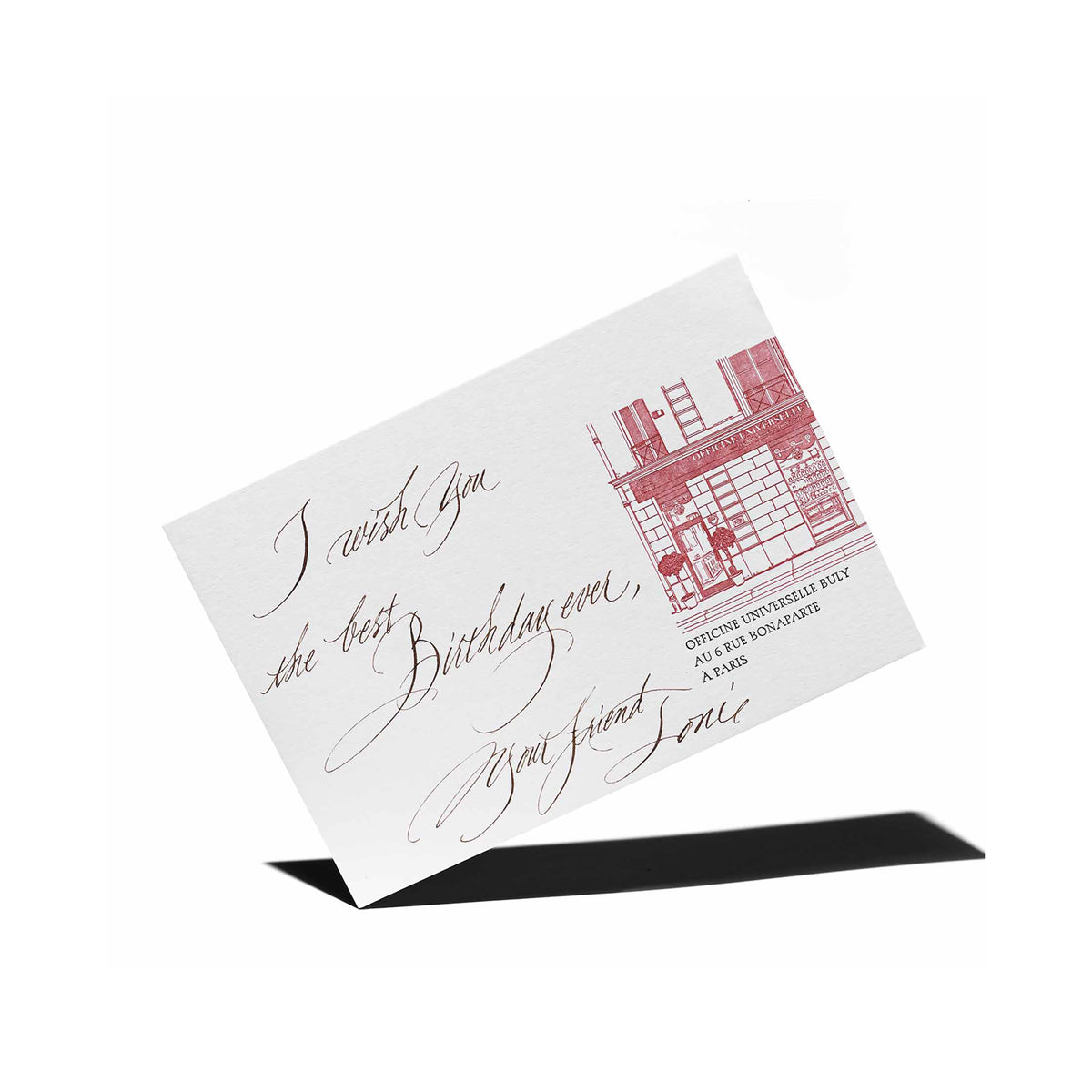The festive season is open! This is undoubtedly when the most beautiful festive moments take place, those that mark a memory for a lifetime: at the table. It is no coincidence that in France we talk about the Art of the Table. From porcelain to silverware, from haute gastronomy to local cuisine, from wines to codes of good manners, the table is a true art of living, governed by requirements, fashions and rituals that may seem mysterious to the uninitiated, but ultimately, there is only one quality that has prevailed in the art of entertaining for centuries: delicacy.
As Jean Anthelme Brillat-Savarin, the magistrate gastronomer and thinker on gourmet pleasures and hedonism, wrote in 1825 in his seminal work The Physiology of Taste, Or Meditations on Transcendental Gastronomy: ...

From porcelain to silverware, from haute gastronomy to local cuisine, from wines to codes of good manners, the table is a true art of living, governed by requirements, fashions and rituals that may seem mysterious to the uninitiated, but ultimately, there is only one quality that has prevailed in the art of entertaining for centuries: delicacy.
As Jean Anthelme Brillat-Savarin, the magistrate gastronomer and thinker on gourmet pleasures and hedonism, wrote in 1825 in his seminal work The Physiology of Taste, Or Meditations on Transcendental Gastronomy...
It is all about pleasing those you love or respect. Entertaining becomes the mirror of these affections. In his Human Comedy, Balzac, the modern Pantagruel and legendary lover of the pleasures of gastronomy, has turned the table and its bacchanals into a unique social theatre where the feelings, aspirations and the nature of his characters are inevitably revealed in a dish or an attitude. A reception table reveals generosity, kindness and sensitivity or, on the contrary, harshness and selfishness. As written for instance by Baroness Staffe (who was not a Baroness) in her Usages du Monde - Règles du savoir-vivre (1889) or by the Countess de Bassanville (who was not a Countess) in her Code du cérémonial: guide des gens du monde en toute circonstance de la vie (1867), initially, table etiquette was also intended to codify by making life gentler and more lovable; rather than building social walls, it brought people together.
This hosting ceremonial unfailingly takes place in each of our Officines across the world, where elegance and friendliness come together in a perfect setting to make the customer feel unique and pampered. At the Officine Universelle Buly, the sophisticatedly folded gift wrap, calligraphic labels and monogrammed objects upon request echo this French art of the table and can themselves gracefully integrate this outstanding setting.
In the 18th century, a number of noteworthy innovations began to transform dining habits: the use of forks spread, as did the use of different-sized glasses and crystalware, and porcelain became whiter thanks to kaolin. The French way of table setting consists of around thirty dishes, all placed simultaneously on a large table, creating - in a sumptuous setting - astonishing gastronomic architectures. Like the pyramids of charcuterie and seafood at the Château de Versailles, mocked by Madame de Sévigné: “One of those pyramids that oblige you to write to each other from one end of the table to the other.” During this table-service, guests were often served cold dishes and only those placed next to them.
In the 19th century, the “modern” table was established with the arrival of the so-called “Russian-style” service. Dishes arrived on the table one after the other, enabling everyone to enjoy the same dishes at the same time. The plate was placed in the centre, three centimetres from the edge of the table, with the knife on the right and the fork on the left. The cutlery was placed in the order in which the dishes were served, from the outside inwards.
The spectacular rise of the bourgeoisie during this century led to the success of glassware and silverware manufactured on an industrial scale, especially thanks to electroplating. The table setting then took on a maximalist aesthetic: with floral arrangements or extraordinary fruit bowls, goldsmith’s centrepieces and candlesticks, etc. In L'Art de recevoir (1964), Hedwige de Polignac described this sudden proliferation of ideas as follows: “Under Napoleon III, tables became cluttered with objects once again: decanters, salt cellars, garlands of flowers, pyramids of fruit. There were enormous centrepieces, huge candelabras, or extreme sophistication: the Castiglione placed a tall cornucopia in pink opaline on a table entirely embedded with flowers and edged with a chased copper border. The art of the table became a cult.”

With the Russian-style service guests have a fixed place.The name tag therefore makes its appearance, so that everyone knows where to sit. With the Officine, the Baume des Muses, a small case stamped with initials, or a more eccentric smallComb engraved in gold letters with a first name, can serve as original name tags. With its glass bell closed so as not to interfere with the flavour of the dishes and its marble pot, the Scented Candle decorates a table with lustre, waiting patiently for the end of the feast to be lit, and to make the eyes of the guests shine as the liqueurs make their appearance.
All the etiquette manuals from the 19th century to the present day agree on one point: it is advisable to entertain within one’s means. In other words, there is no need to dazzle with expensive dishes; it is a question of designing a meal to please the guests, to delight them, whether with simplicity or with bestowal. However, this does not mean that we cannot be creative, or even eccentric…In 1973, in his gastronomy book Les Dîners de Gala, Salvador Dali took up the challenge of making the table surreal with dishes designed by La Tour d’Argent, Maxim’s and Le Train Bleu, listed in the chapters Les délices petits martyrs(hors d'oeuvres) and Les suprêmes de malaises lilliputiens (starters) with evocative names such as “dindonettesmexicaines” (Mexican turkeys), “œufs de milleans” (thousand-year-old eggs) or even“buisson d’écrevisses aux herbes des Vikings” (lobster bush with Viking herbs). As Dali mysteriously writes in this book:

Another era, another atmosphere, one can also take inspiration from 17th century Dutch still lifes to decorate the table with bowls of fruit and flowers, or devise colour-coded menus in the style of “The Chromatic Diet” by artist Sophie Calle in 1997. She designed six meals for the six days of the week in six colours (orange, red, white, green, yellow and pink). In his book Against the Grain (À Rebours)(1884), a masterpiece of decadent literature, Joris-Karl Huysmans describes a “Black Dinner” given by the Baron des Esseintes to his guests, where the dishes are of the colour of ink: “The dining room was hung with black and looked out on a strangely metamorphosed garden, the walks being strewn with charcoal, the little basin in the middle of the lawn bordered with a rim of black basalt and filled with ink; and the ordinary shrubs superseded by cypresses and pines. The dinner itself was served on a black cloth, decorated with baskets of violets and scabiosae and illuminated by candelabra in which tall tapers flared.”
Sign up to receive future newsletters of The Officine.

We will send you an email to reset your password
Your cart is currently empty
Upon request, your purchases are wrapped in a printed paper reproducing an old newspaper or slipped into an elegant, green-marbled gift pochette, as an homage to the creation and history of the Officine Universelle Buly.
The Exceptional origata gift wrapWHETHER FLORAL, STRIPED OR CHECKERED, AND ALWAYS HIGHLY CHROMATIC, THESE JAPANESE PAPERS ARE INSPIRED BY THE MOTIFS RESERVED FOR KIMONOS AND ARE FOLDED ACCORDING TO THE HIGHLY CODIFIED ART OF ORIGATA.
Monogram gift wrapThe initials of the fortunate recipient are embossed on the elegantly textured gift paper. Gilded in the old-fashioned style, the initials are then highlighted with a velvet ribbon.


Choose the size of your bag
XS: Miniature case for small comb, soap or baume des muses ∙ 2,00 €
S: Travel companion for perfumed vials ∙ 2,00 €
M: Distinguished bag for scented candles and large books ∙ 2,00 €

Select the products to be gift wrapped
These products are already gift-wrapped
None of the product in the cart are compatible with this service

Select the products to be gift wrapped
These products are already gift-wrapped
None of the product in the cart are compatible with this service

Select the products to be gift wrapped
These products are already gift-wrapped
None of the product in the cart are compatible with this service
Every request will be respected as far as possible and the possibilities are great at Officine Universelle Buly.
Quantity :

Have your initials or those of the lucky recipient engraved in the heart of your Savon Superfin.
Have your accessory engraved with your initials, your name, or those of the person you’re gifting it to.
Have your initials or those of the lucky recipient of this gift engraved on the kit, the balm, the comb and on the toothbrush
Our bottles, candles and incenses are carefully packaged with handwritten calligraphy labels.
Our master calligrapher, armed with a quill and ancient ink pads, will create a wonderful bookplate on the title page.
We mail your calligraphic message directly to your recipient.
Please enter valid characters only
However, it seems that you are in Japan, would you like to switch to our Japanese website based in Tokyo?
Visit our StoreWe think you're in .
Update your delivery location?